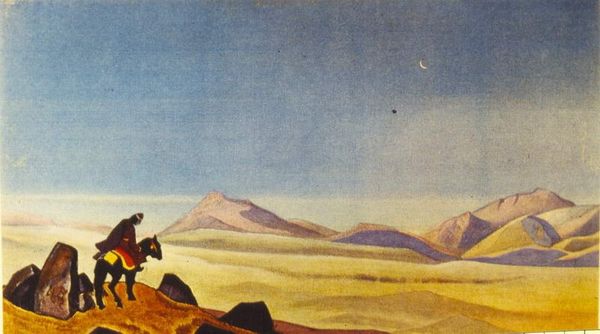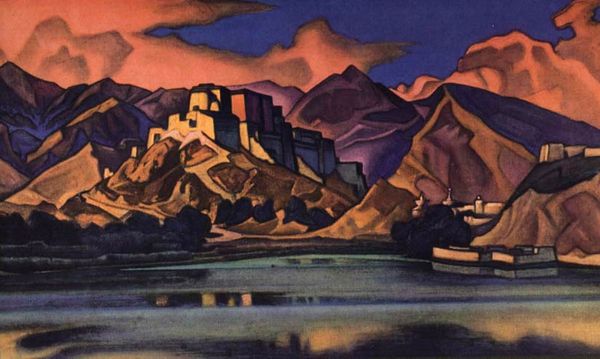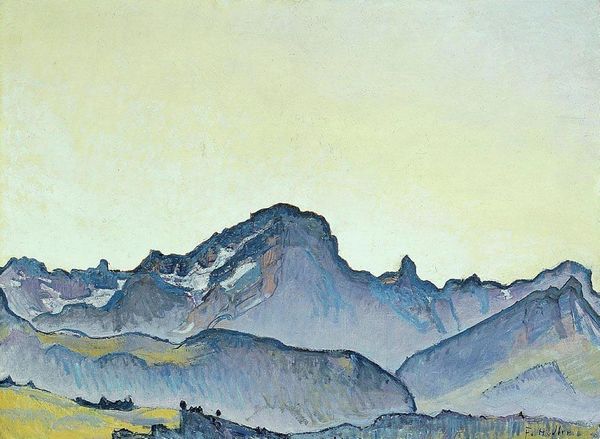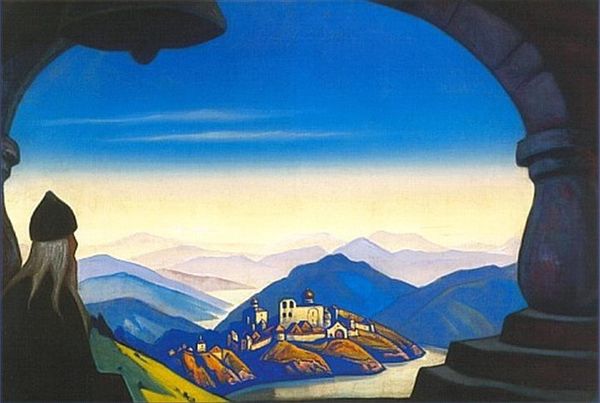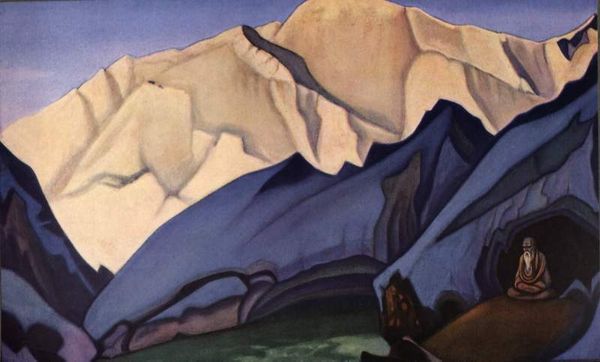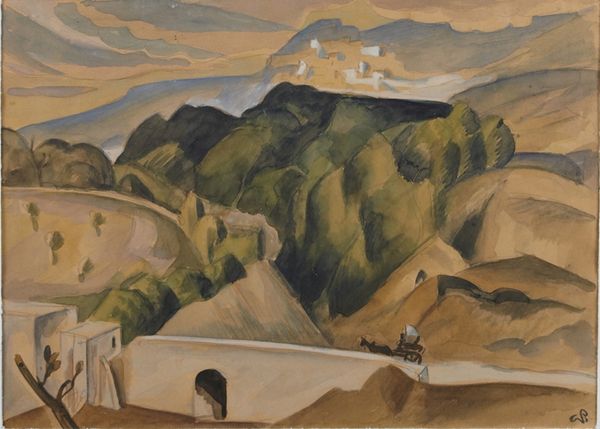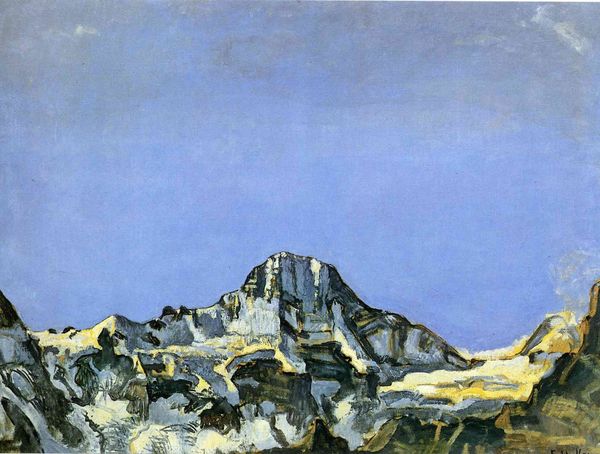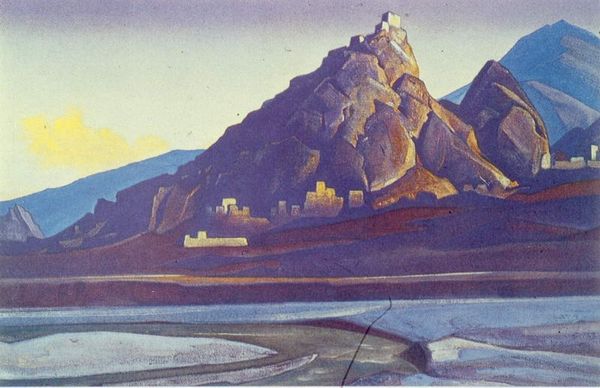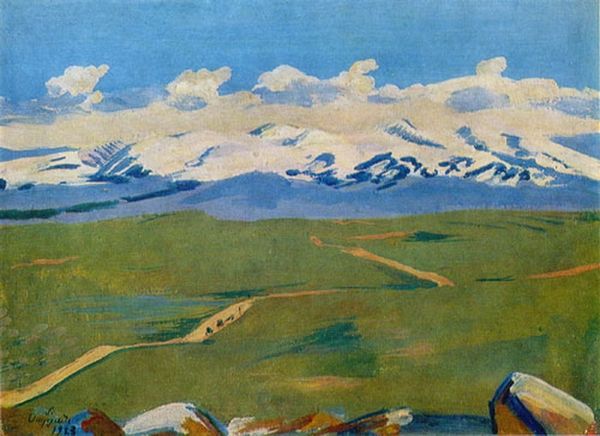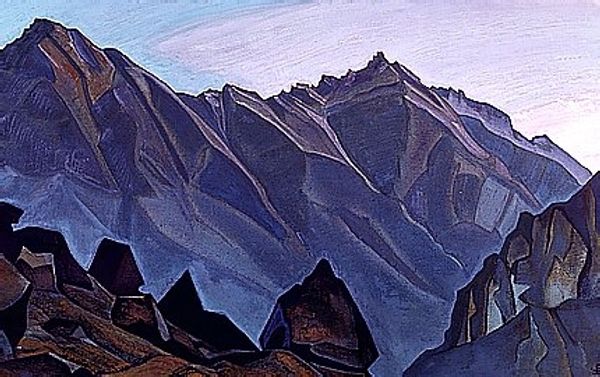
Dimensions: 76 x 117 cm
Copyright: Public domain
Curator: Right now, we're looking at Nicholas Roerich's "Sword of Gesar" from 1932, a tempera on canvas currently residing in the Tretyakov Gallery. Editor: Wow, what strikes me first is the muted palette and this feeling of stillness, almost…monumental calm. It feels ancient. Curator: That’s Roerich's intention, I think. The subject matter, Gesar, is drawn from Central Asian epic traditions – he's this mythical warrior king. Editor: And the landscape itself feels deliberately stylized, not quite photorealistic. I'm curious about the choice of tempera; the matte finish really enhances that feeling of age. Was this easily available for him? I am really curious about this. Curator: Absolutely. Tempera provided that earthly, grounded feel he was after, which goes hand in hand with how he treated his linen canvas support as the physical labor he saw when preparing and painting it: he considered that practice deeply important for its effect. It wasn't about replicating a scene, but about evoking the timeless quality of the epic. The paint texture, as result, it’s pretty interesting, right? Editor: Yes. Look at the sword itself, carved into that stone… it suggests a narrative not just of conquest, but of cultural inscription, how legends become embedded in the very earth. How Roerich's interest for landscape has merged with figuration within this work, by means of symbolising and embedding the Sword into landscape features! Curator: Precisely. And Roerich's personal spiritual quest was heavily influenced by Theosophy; this painting reflects that search for universal, underlying truths and wisdom traditions from the past. Editor: Knowing Roerich’s background shifts how I see the materiality. It isn't merely about aesthetic choices, but it becomes an expression of belief, linking him to larger structures like mythology and esoteric thought… a fascinating cultural product that mirrors both the artist's vision and his moment in history. It’s like holding history in the canvas. Curator: I agree. It feels as though, after researching and thinking together about its components and ideas, that one leaves with a renewed sense of interconnectedness in history, which helps the way that one re-tells this story, even the way one makes stories after listening to this tale, for example. Editor: Indeed, It seems, at least to me, that everything, finally, feels far more significant in the realm of painting and culture after talking.
Comments
No comments
Be the first to comment and join the conversation on the ultimate creative platform.
